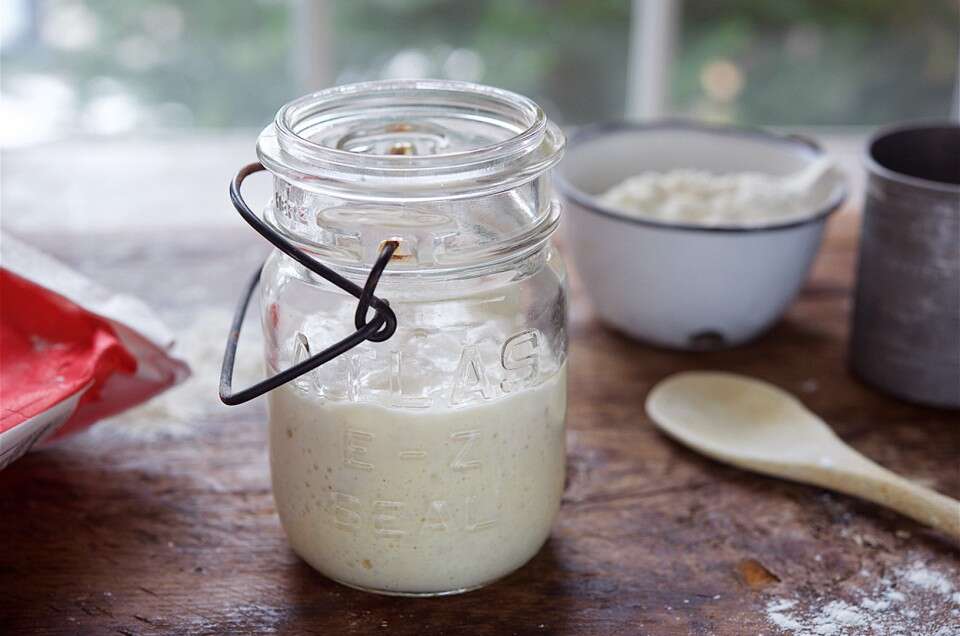While the world was in quarantine, many people picked up new hobbies. For some, it was working out; for others, it was watching movie marathons; and for many, baking became a new favourite pastime. On social media, people shared their experiences trying their hand at making bread and pastries in their free time.
Baking became so popular that many grocery stores around the world experienced yeast shortages. With yeast unavailable, many home bakers got inventive and turned to sourdough starters instead. Sourdough starters are an alternative to yeast that help produce an airy, tangy bread with a crunchy crust. It’s delicious, yes, and it’s also alive.
“A sourdough starter is a microbial community in a dough […] that has the potential to turn the starch and sugar from that dough into carbon dioxide and alcohol to make the bread rise,” Dr. Jennifer Ronholm, assistant professor in the Department of Food Science and Agricultural Chemistry, said in an interview with The McGill Tribune.
The fermentation mechanism of a sourdough starter closely resembles that of yeast. Yet, it is the wide variety of bacteria in the culture that gives sourdough its irresistible, tangy flavour. When carbon dioxide gas is released during the setting process, it forms little pockets of air that make the bread rise into a delicious, fluffy loaf.
“In sourdough bread, the microbial community is composed of some yeasts, but there are […]100 times more lactic acid bacteria than yeast in a sourdough starter,” Ronholm said. “Yeasts produce alcohol and carbon dioxide whereas the lactic acid bacteria produce carbon dioxide, lactic acid, and acetic acid. It’s those other acids that give the sourdough breads their unique flavours.”
The bacteria found in sourdough starters, often of the genus Lactobacillus, do not need to be intentionally added to the starter mix as yeast does in traditional breads. Bacterial cultures in sourdough usually originate from the flour and water used to make the starter, and from the baker’s own hands, which, despite their vigorous handwashing, are covered in bacteria.
In an ongoing project from 2017, Dr. Rob Dunn, a professor of applied ecology at North Carolina State University, found that the bacteria introduced to starters from different bakers’ hands gave their sourdoughs unique bacterial profiles and, by extension, one-of-a-kind flavours.
Dunn and his team instructed 15 bakers from around the world to bake bread using the same ingredients, but with starters that they had nurtured themselves. The results of the project indicated that the variable bacterial profiles of each starter produced notable differences in flavour when taste-tested.
“Each bread had a unique ‘microbe flavour’ influenced by chance and the microbes in the flour, on the bakers’ hands, and in their bakeries,” Dunn said in an article for Technology, Entertainment, Design.
Bakeries and home chefs around the world are quick to boast about the quality and longevity of their sourdough starters, passed down over decades from their own parents and grandparents. Sourdough starters do not age like wine or cheese, however—they are constantly changing and growing.
“I think a lot of people don’t realize that it’s different from day to day,” said Ronholm. “A lot of people have these starter cultures that have been passed around for years or some companies have started cultures that are years old, but from hour to hour, day to day, these cultures will be continuously changing. Even though you’re advertising that you have this ultra-old culture, it’s very different from day to day.”
Not only are these microbial cultures fascinating and delicious, they’re also living beings. Those who make their own sourdough starter often get attached to it, treating it like a surrogate pet-in-a-jar and feeding it flour and water regularly. So, perhaps when this is all over, amateur bakers around the world will have made some new friends despite social distancing guidelines—even if those new friends are microscopic.









